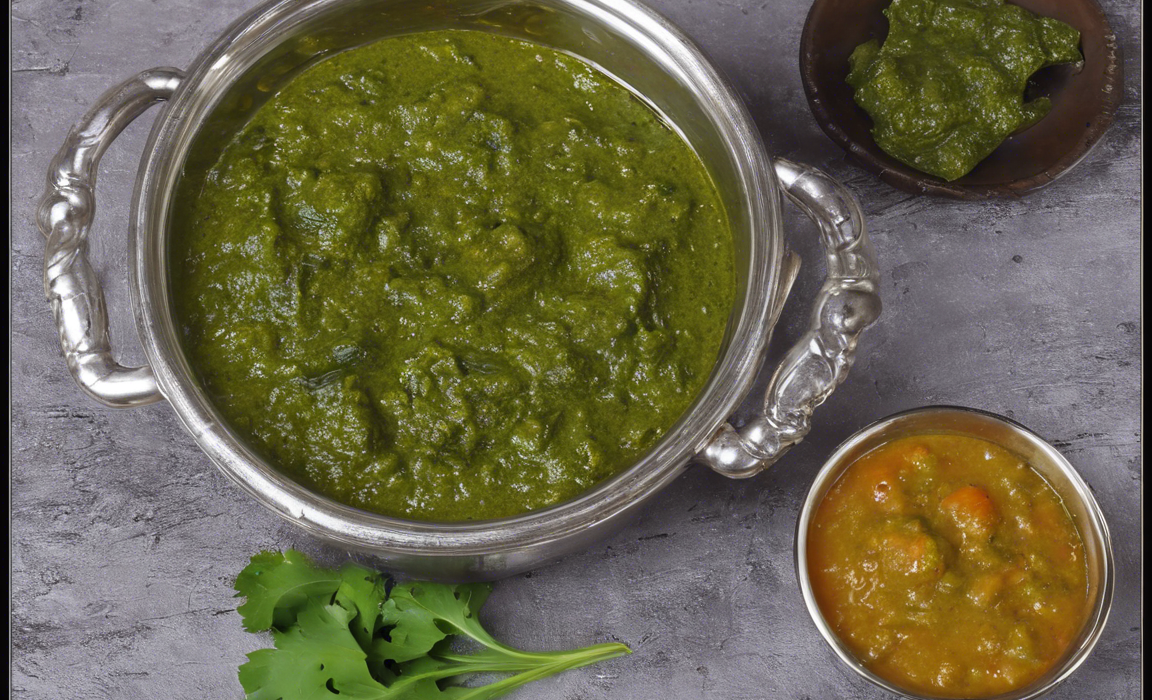With the onset of winter, it’s the perfect time to indulge in hearty and comforting meals. One such dish that perfectly encapsulates the essence of winter is Sarson Ka Saag. This traditional North Indian dish hails from the states of Punjab and Haryana and is a must-have during the winter season. The rich and rustic flavors of mustard greens, combined with other leafy vegetables, make this dish a nutritional powerhouse packed with flavor. Let’s dive into the wonderful world of Sarson Ka Saag and learn how to make this winter delight at home.
What is Sarson Ka Saag?
Sarson Ka Saag is a popular Punjabi dish made from mustard greens, spinach, and other leafy greens. It is typically served with makki ki roti (cornmeal flatbread), topped with a dollop of butter or ghee. This dish is not only delicious but also incredibly nutritious, as mustard greens are high in antioxidants, vitamins, and minerals.
Ingredients:
- 500g mustard greens
- 250g spinach
- 1 bunch of fenugreek leaves (methi)
- 2-3 green chilies, chopped
- 1 inch ginger, chopped
- 4-5 cloves of garlic, chopped
- 1 onion, finely chopped
- 2 tomatoes, chopped
- 1 tsp cumin seeds
- 1 tsp turmeric powder
- 1 tsp red chili powder
- Salt to taste
- Ghee or butter for garnish
Instructions:
-
Preparation of Greens:
- Wash the mustard greens, spinach, and fenugreek leaves thoroughly.
- Boil them in a pressure cooker or a large pot until soft.
- Drain the excess water and let the greens cool.
-
Making the Saag:
- Blend the boiled greens into a coarse paste.
- In a pan, heat ghee or oil and add cumin seeds.
- Add chopped garlic, ginger, and green chilies. Sauté until fragrant.
- Add chopped onions and cook until translucent.
- Mix in the chopped tomatoes and cook until they turn mushy.
- Add turmeric powder, red chili powder, and salt. Cook for a few minutes.
- Add the blended greens and mix well. Cook for 15-20 minutes on low heat, stirring occasionally.
-
Tempering:
- In a separate pan, heat ghee or butter for tempering.
- Add a pinch of asafoetida, cumin seeds, and red chili flakes.
- Pour this tempering over the prepared Sarson Ka Saag.
- Serve hot with makki ki roti and a dollop of butter.
Tips and Variations:
- You can add a dollop of fresh cream or malai to enhance the richness of the dish.
- For a vegan version, use plant-based oil instead of ghee or butter.
- Adding cornmeal to the saag can help in thickening the consistency and adding a nutty flavor.
- To amp up the nutrition, you can add other greens like bathua (pigweed) or kale to the dish.
Health Benefits of Sarson Ka Saag:
- Rich in antioxidants that help boost immunity.
- High in fiber, aiding in digestion and promoting gut health.
- Packed with iron, calcium, and vitamins A, C, and K.
- Low in calories, making it a great choice for weight management.
FAQs:
1. Can I use frozen greens instead of fresh ones for Sarson Ka Saag?
Yes, you can use frozen greens if fresh ones are not available. However, fresh greens are preferred for better taste and texture.
2. How long can I store leftover Sarson Ka Saag?
Leftover Saag can be refrigerated for 2-3 days. Reheat it on the stovetop or in the microwave before serving.
3. Can I freeze Sarson Ka Saag for later use?
Yes, you can freeze Sarson Ka Saag in airtight containers for up to 3 months. Thaw it in the refrigerator before reheating.
4. What can I serve with Sarson Ka Saag if I don’t have makki ki roti?
You can serve Sarson Ka Saag with regular roti, naan, or rice if makki ki roti is not available.
5. Can I make Sarson Ka Saag without onions and garlic?
Yes, you can skip onions and garlic if you prefer or if following specific dietary restrictions. Adjust the seasoning accordingly.
In conclusion, Sarson Ka Saag is not just a dish but an experience that brings warmth and comfort during the cold winter months. Its rich flavors and nutritional benefits make it a must-try for all food enthusiasts. So, gather your ingredients, follow the recipe, and enjoy a bowl of this hearty delicacy with your loved ones.





